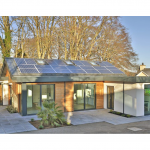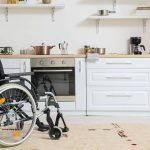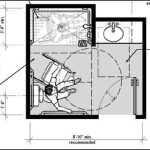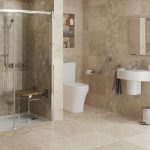Designing Home Accessibility for Individuals with Disabilities
Discover practical tips for making your home accessible for individuals with disabilities. Follow our checklist and create a safe and independent living space. Start improving your home’s accessibility today!
Home accessibility is an essential consideration for individuals with disabilities or injuries, as it can significantly impact their quality of life. The ability to move freely and safely within one’s home is critical for independent living and daily care. Home accessibility also plays a vital role in ensuring that individuals have equal opportunities to participate in all aspects of life.
Creating an accessible home involves a range of home modifications, including changes to doorways, hallways, furniture placement, appliances, bathroom fixtures, and more. While the process may seem daunting, there are resources available to help individuals and families navigate the process.
In this article, we will explore the importance of home accessibility and provide a comprehensive guide for aging in place remodeling. We will discuss the benefits of accessible housing, the requirements of the Americans with Disabilities Act (ADA), and the process of making reasonable accommodations. We will also provide a checklist of essential modifications and offer tips for finding community support and resources.
By the end of this article, you will have a better understanding of home accessibility and be equipped with the tools and information necessary to make your home more accessible and comfortable for everyone.
Basic Access: Widening Doorways and Hallways
One of the most critical aspects of designing an accessible home is ensuring that doorways and hallways are wide enough to accommodate wheelchairs. Standard door sizes may not be sufficient, so it’s essential to consider wider doors during construction or renovation.
Wider hallways also provide more space for maneuvering around the house. This is particularly important in areas where turning around may be challenging, such as tight corners or narrow hallways.
It’s recommended that the minimum width for a doorway in an accessible home is 32 inches, as per the Americans with Disabilities Act (ADA) guidelines. This allows enough room for a wheelchair user to comfortably pass through the doorway. It’s also important to ensure that the doors themselves are easy to open and close. Lever handles, as opposed to traditional doorknobs, are an excellent option, as they are easier to use and require less manual dexterity.
Widening doorways can be a costly modification, so it’s essential to budget accordingly. However, the benefits of increased accessibility and ease of movement are well worth the investment. It’s also important to consult with a professional contractor who has experience in this area.
They will be able to assess the space and determine whether it’s possible to widen the doorway without compromising the home’s structural integrity. In some cases, removing walls or repositioning doors may be necessary.
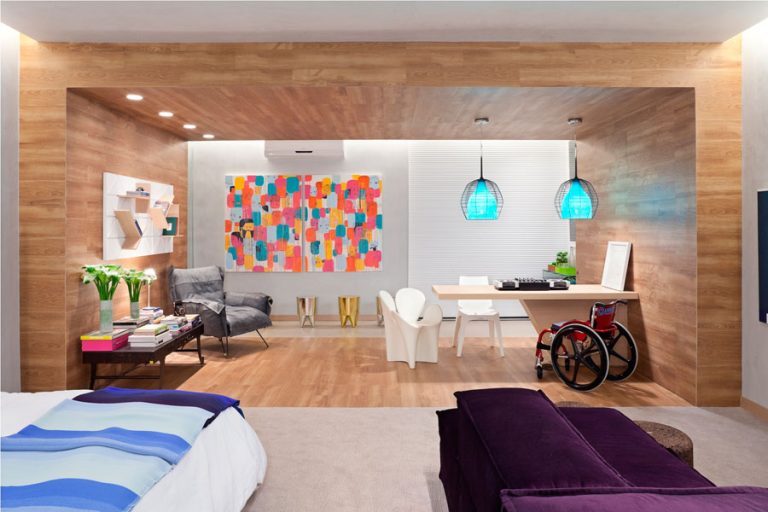
Basic Access Features of an Accessible Home
When designing or renovating a home for accessibility, it is important to consider the basic access features that are necessary for wheelchair users and individuals with mobility limitations to move around comfortably. These features ensure that the home is safe, functional, and comfortable for everyone.
One of the most crucial aspects of designing an accessible home is ensuring that doorways and hallways are wide enough to accommodate wheelchairs. Standard door sizes may not be sufficient, so it’s essential to consider wider doors during construction or renovation. Wider hallways also provide more space for maneuvering around the house.
In addition to wider doors and hallways, it’s also important to consider the placement of furniture. Furniture should be arranged in such a way as to allow enough space for easy movement throughout the house. It’s important to ensure that there are no obstacles or barriers that could impede mobility.
When designing each room of the house, it’s important to keep in mind the needs of individuals who use wheelchairs. For example, installing grab bars in a handicapped bathroom is a must-have feature to prevent falls and provide support when using the toilet or shower. Lowering light switches and thermostats can also make a big difference in improving accessibility within your home. These features should be placed at a height that is easy for someone in a wheelchair or with limited mobility to reach comfortably.
Finally, creating an open floor plan can greatly improve navigation throughout your home. Removing unnecessary walls or furniture can create more space for maneuvering around tight corners or narrow hallways.
By incorporating these basic access features, you can create a home that is safe, comfortable, and accessible for everyone. These features should be considered in every aspect of the design process, from the initial planning stages to the final construction or renovation.
Designing Each Room of the House
When designing an accessible home, it’s important to keep in mind the needs of individuals who use wheelchairs or other mobility devices. Here are some considerations for designing each room of the house:
- Entryways and Hallways: As mentioned earlier, wider doorways and hallways are essential for accessibility. A minimum doorway width of 32 inches is recommended by the ADA. In addition, consider using non-slip flooring and keeping the hallway clear of obstacles to ensure safe and easy movement.
- Living Room: When it comes to furniture placement, consider creating a clear path for easy maneuverability. Choose furniture that is easy to move around and arrange in a way that allows for plenty of open space. Consider using area rugs with a low pile to prevent tripping hazards.
- Kitchen: When arranging the kitchen, consider the height and placement of the appliances. For individuals with mobility limitations, it may be difficult to reach high cabinets or bend down low to access items. It’s also important to install countertops at a suitable height for easy preparation of meals. Consider using cabinets with pull-out shelves or drawers to make items more accessible.
- Bathroom: Grab bars are essential for the safe use of the handicapped bathroom and should be installed near the toilet, bathtub/shower area, and any other areas where additional support may be needed. Non-slip flooring and a non-slip mat or rug outside of the bathtub or shower area can also improve safety. Installing a wheelchair-friendly toilet with a height of 17-19 inches and sufficient space around it for easy transfer from the wheelchair is important.
- Bedroom: When it comes to furniture placement in the bedroom, consider the placement of the bed, dresser, and closet rods. Make sure there is enough space to maneuver around the furniture comfortably. Installing a closet with adjustable rods and shelves can also make it easier to access clothing.
By designing each room of the house with accessibility in mind, individuals with disabilities can live more independently and comfortably.
Accommodations for an Accessible Home
Accommodations are modifications or adjustments that make it possible for individuals with disabilities to live independently and comfortably. Several accommodations can be made in a home to ensure that it is accessible for wheelchair users and individuals with limited mobility. Here are some accommodations to consider:
- Wider Doorways and Hallways: Doorways and hallways should be wide enough to accommodate wheelchairs, walkers, and other mobility aids. The standard doorway width is around 30 inches, but this may not be sufficient for individuals who use a wheelchair or other mobility devices. Widening doorways can make a significant difference in terms of accessibility and ease of movement. A minimum doorway width of 32 inches is recommended by the ADA.
- Furniture Placement: Furniture should be arranged in such a way as to allow enough space for easy movement throughout the house. It’s important to ensure that there are no obstacles or barriers that could impede mobility.
- Wheelchair-Friendly Toilets: Toilets should be designed with accessibility in mind. Wheelchair-friendly toilets should be at an appropriate height, have grab bars installed nearby, and have enough space around them for easy transfer from the wheelchair. These features enable independent living and care for disabled individuals.
- Grab Bars: Grab bars should be installed in the bathroom and around the house to provide additional support and stability for individuals with mobility issues. They should be installed near the toilet, bathtub/shower area and any other areas where additional support may be needed.
- Lowered Switches: Light switches, thermostats, and other fixtures should be placed at a height that is easy for someone in a wheelchair or with limited mobility to reach comfortably.
- Open Floor Plan: Creating an open floor plan can greatly improve navigation throughout your home. Removing unnecessary walls or furniture can create more space for maneuvering around tight corners or narrow hallways.
- Outdoor Accessibility Updates: Ramps, Handrails, and Wider Doorways: Updating your home’s outdoor space to make it more accessible is an important step towards ensuring that everyone can enjoy the great outdoors. Adding a ramp to your front entrance can allow individuals who use wheelchairs or walkers to easily access your home without having to navigate stairs. Handrails provide added support and stability for those who need it. Wider doorways are essential for accommodating wheelchairs and walkers.
By making these accommodations, individuals with disabilities can live independently and comfortably in their own homes.
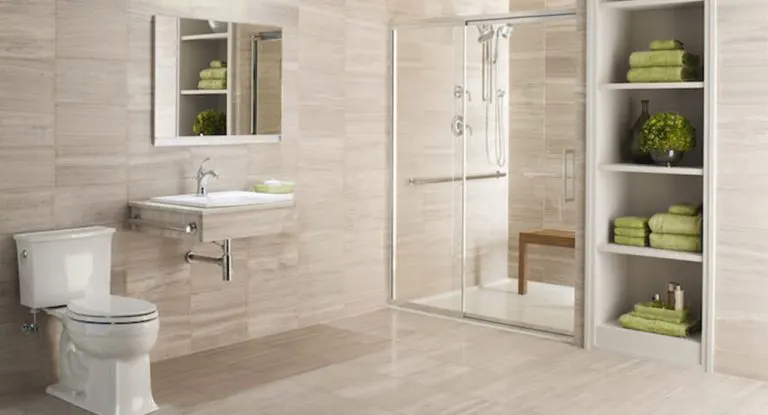
Outdoor Home Accessibility Updates: Ramps, Handrails, and Wider Doorways
Making your home’s outdoor space more accessible is an important step towards ensuring that everyone can enjoy the great outdoors. One of the most common updates is adding a ramp to your front entrance. This allows individuals who use wheelchairs or walkers to easily access their homes without having to navigate stairs. It’s important to ensure that the ramp is ADA-compliant, with a slope no steeper than 1:12 and a minimum width of 36 inches.
Handrails are another feature that can greatly improve accessibility for those with mobility issues. Installing handrails on both sides of any steps leading up to your home or around your outdoor space can provide added support and stability for those who need it. Wider doorways are essential for accommodating wheelchairs and walkers. A minimum doorway width of 32 inches is recommended by the ADA.
In addition to ramps, handrails, and wider doorways, there are other updates you can make to your outdoor space to make it more accessible. For example, consider adding outdoor seating areas with benches or chairs that are easy to get in and out of. Ensure that pathways and walkways are clear and level to allow for easy navigation with mobility devices. Installing motion-activated lighting can also be helpful for individuals with visual impairments or mobility limitations.
It’s important to keep in mind that these updates not only benefit individuals with disabilities but also older adults who may have difficulty navigating uneven terrain or steps. Making your outdoor space more accessible can help prevent falls and injuries while promoting independence and outdoor enjoyment for everyone.
Complete Basic Home Accessibility Checklist for Disabled and Elderly Individuals
Whether you are renovating your existing home or designing a new one, it’s important to have a checklist of features to ensure your home is accessible to everyone. Here is a basic home accessibility checklist:
- Entryway: Ensure there is a clear path from the driveway or sidewalk to the front door, with no steps or obstacles. If steps are present, consider installing a ramp or lift. Ensure the front door has a threshold ramp if there is a small step. Install an automatic door opener if possible.
- Doorways: Ensure all doorways are at least 32 inches wide and have lever handles instead of knobs. Remove any unnecessary doors or widen doorways if necessary.
- Hallways: Ensure all hallways are at least 36 inches wide and free of obstacles. Consider installing handrails if needed.
- Flooring: Install slip-resistant flooring to prevent falls. Ensure all rugs are secured with non-slip pads or removed entirely.
- Lighting: Install bright, even lighting throughout the house, especially in hallways, stairways, and other high-traffic areas.
- Kitchen: Install lower countertops, pull-out shelves, and cabinets with easy-to-use handles. Ensure appliances are at a suitable height and easy to reach.
- Bathroom: Install grab bars near the toilet, shower, and bathtub. Install a walk-in shower with a built-in seat. Ensure the sink and mirror are at a suitable height.
- Bedrooms: Install closet rods at a suitable height, and ensure there is enough floor space for maneuvering a wheelchair.
- General Information: Consult with professionals such as architects and contractors who have experience in designing accessible homes. Check with your local county or deputy clerk’s office for any necessary permits or regulations before making modifications.
By following this checklist, you can ensure your home is accessible and comfortable for everyone. Remember, small modifications can make a big difference in improving home accessibility.
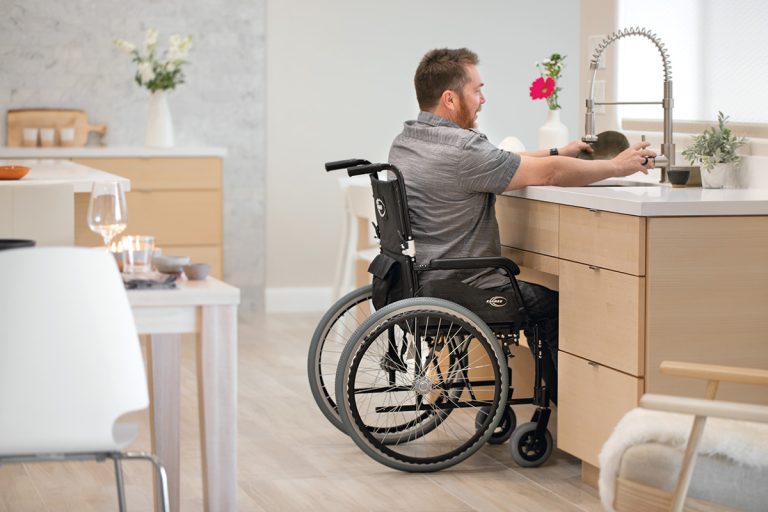
Comprehensive Home Accessibility Checklist for Wheelchair Users and Mobility Impaired Individuals
To help ensure that a home is as accessible as possible for individuals with disabilities, there are several key features to keep in mind. Here is a checklist to consider when designing or modifying a home for accessibility:
- Wider doorways: Doorways should be at least 32 inches wide to accommodate wheelchairs and other mobility devices.
- Lowered switches and thermostats: Switches and thermostats should be placed at a height that is easily reachable for individuals in wheelchairs or with limited mobility.
- Grab bars: Grab bars should be installed in bathrooms, particularly near the toilet and shower, to provide additional support and prevent falls.
- Wheelchair-friendly toilets: Toilets should be at an appropriate height and have grab bars installed nearby, with enough space around them for easy transfer from a wheelchair.
- Wider hallways: Hallways should be at least 36 inches wide to provide more space for maneuvering around the house.
- Outdoor accessibility updates: Ramps, handrails, and wider doorways are essential for wheelchair users to access the home’s outdoor spaces.
- Open floor plans: Creating an open floor plan can improve navigation throughout the home and provide more space for maneuvering.
- Kitchen accessibility: When arranging a kitchen for accessibility, consider the height and placement of appliances, installing countertops at a suitable height, utilizing cabinets with pull-out shelves or drawers, and installing a lazy Susan or rotating storage system.
- Front door and entrance modifications: Widening doorways, adding automatic door openers, or installing threshold ramps can make entering and exiting the home easier for individuals with mobility issues.
- Community support: Access to community resources such as transportation services, accessible public spaces, and social events can provide opportunities for socialization, employment, and education.
By following this checklist and working with professionals who have experience in designing accessible spaces, individuals with disabilities can create a home that meets their unique needs and allows for independent living.
Community Support and Resources
In addition to modifications and adaptations that can be made to a home, community support is also an essential aspect of ensuring accessibility for individuals with disabilities. Community resources such as accessible public spaces, transportation services, and social events that cater specifically to their needs can provide opportunities for socialization, employment, and education.
One valuable resource is the Americans with Disabilities Act (ADA) coordinator. An ADA coordinator is a professional who provides guidance and support to housing providers, businesses, and organizations to ensure they comply with the ADA guidelines. They can help identify potential accessibility issues and recommend reasonable accommodations.
Many cities and counties have their own ADA coordinators who can guide residents. For example, in Arlington County, Virginia, the Department of Human Services offers an ADA coordinator who can provide assistance and support to individuals with disabilities and their families.
Additionally, social media platforms such as Facebook and Instagram can be a great source of information and support for individuals with disabilities. Many users share their experiences and ideas for creating a more accessible living space, and connecting with others who have gone through similar experiences can provide valuable insight and support.
Translation services can also be a valuable resource for individuals with limited English proficiency. Many organizations offer translation services for individuals who speak languages other than English, ensuring that they have access to the same information and resources as everyone else.
Overall, community support and resources are an essential aspect of ensuring accessibility for individuals with disabilities. By taking advantage of these resources and services, individuals can live more independent and fulfilling lives.
Home Accessibility: Considerations for Independent Living
Creating an accessible home is not only important for individuals with disabilities but also for older adults and those with limited mobility. By incorporating accessible design elements and modifications, individuals can live independently and comfortably in their own homes.
From wider doorways and wheelchair-friendly toilets to grab bars and open floor plans, there are many features to consider when designing or modifying a home for accessibility. It’s also important to take advantage of community support and resources, such as ADA coordinators, social media platforms, and translation services.
At Live in Place Designs, we specialize in creating accessible and functional living spaces that meet the unique needs of our clients. Our team of experts can work with you to design and modify your home to be accessible and comfortable for everyone. Contact us today to learn more about our services and how we can help you create a home that promotes independent living.



